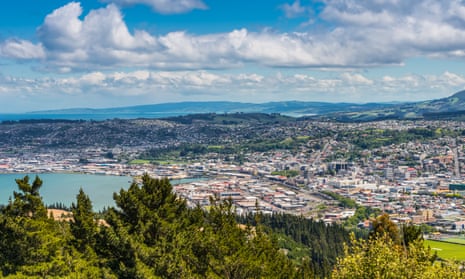It was a conclusion that many had suspected but until now couldn’t prove: New Zealand’s multimillionaires, according to a bombshell Inland Revenue report released this week, pay a lower rate of tax than supermarket cashiers.
The report shows that New Zealand’s 311 wealthiest families pay just 8.9% of their income in tax – less than the rate paid by a minimum wage worker (10.5%) and less than half the rate paid by the average Kiwi (19.7%).
These wealthy individuals have such a low tax rate because so much of their income (about 80%) is capital gains – money made from selling assets – and that is barely taxed. Only 17% of their income is conventionally taxable income like wages and salaries. So despite being worth an average of NZ$276m ($168m; £135m) each, and typically earning $8m a year, these families pay an average of about $640,000 each in tax – less than 10% of their income.
One of the most striking findings from the report is that the 8.9% tax rate paid by New Zealand’s richest is almost identical to the 8.2% paid by the 400 wealthiest American families, according to research carried out by the US Council of Economic Advisers.
Those wealthy Americans are notorious for paying very low tax rates, and indeed for avoiding playing by the same rules as their fellow citizens. What the Inland Revenue report suggests is that New Zealand’s wealthy, though far less ostentatiously plutocratic than their American counterparts, are equally adept at working the system to their advantage.
Meanwhile, a companion report by Treasury analysts shows that New Zealand’s well-off are even wealthier than previously thought. The 0.01%, roughly 400 taxpayers, own something like 2.4% of all wealth – more than the entire bottom half of the population.
For anyone who believes that fairness matters, and that those who can most afford it should contribute more to the collective pot of taxes, these are outrageous findings. They are also a reminder of the profoundly unbalanced nature of a New Zealand tax system that asks a lot from its poorest citizens but relatively little from the best-off.
Low-income workers pay a flat-rate GST that takes a bigger chunk out of their incomes than it does for richer families, while also paying tax on every cent they earn. Conversely, as the Inland Revenue report demonstrates, the well-off pay a relatively low rate, in the absence of any meaningful tax on capital gains or wealth. New Zealand does have a “brightline” test but it captures only the gains made by selling investment properties within 10 years – a fraction of all capital gains.
Tax advisers and right wing lobby groups have, unsurprisingly, attacked the report. But it holds up to scrutiny.
One objection is that the income of the 311 wealthiest families includes unrealised capital gains: that is, increases in the value of assets that have not yet been sold. For some, this is not “income”.
However, it is an increase in wealth that can be borrowed against, and will eventually turn into conventional income once sold. If the research – which covered the six years from 2015 to 2021 – had counted only the sales made during that time, it would have underestimated the accumulated capital gains of the wealthy.
Critics have also seized on the super-large house-price rises of 2020 and 2021 to argue that the report chose an artificially bloated period. But the results are largely the same even looking at longer time horizons.
It is, in short, an impressive report, one that lifts the veil of secrecy surrounding the tax affairs of the rich. It also hints at the huge amount of tax – undoubtedly in the billions of dollars during that six-year period – that was lost by not taxing capital gains.
Whether the Labour government wants to go down that road again, having lost a battle to introduce a capital gains tax in 2019, is far from clear. But the arguments for doing so have only got stronger.
Max Rashbrooke is a senior associate at New Zealand’s Institute for Governance and Policy Studies
